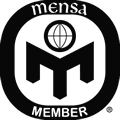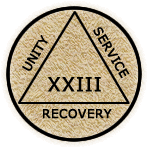With friends in government, Motorola beats a path to telecom supremacy BY GREG GORDON AND LYDIA MULVANY
McClatchy Washington Bureau
March 30, 2014 
Motorola won the contract for the MSWIN land mobile radio system used by the Mississippi Highway Patrol. Here, microphones from the various systems installed in MHP troopers patrol units are show at Troop K headquarters in Biloxi, Miss., Dec. 11, 2013. JOHN FITZHUGH — MCT
|
WASHINGTON — At the eastern end of the San Francisco Bay Area, Sheriff Warren Rupf of Contra Costa County and cigar-chomping Sheriff Charlie Plummer of neighboring Alameda County were political powerhouses seemingly locked in an endless duel of one-upsmanship. When Rupf set up a marine patrol, Plummer started buying boats. They echoed each other with helicopters, SWAT teams, and on it went. But in 2005, amid a federal push to avoid another communications nightmare like the one blamed for the Sept. 11, 2001, deaths of 125 New York firefighters at the collapsed World Trade Center, Rupf and Plummer joined forces. They set their sights on a new digital two-way radio system so that all of their first responders could talk to each other. There was, however, a catch. A notice circulated by Alameda County to gauge vendors’ interest in the project said that the first $5.7 million phase must include a master controller made by Motorola Inc., and the equipment must connect with the county’s aged, proprietary Motorola SmartNet II system. In other words, “it was already a done deal . . . nobody else could make their equipment compatible with soon-to-be-obsolete Motorola equipment” — nobody except Motorola, said Steve Overacker, who was Contra Costa County’s telecommunications manager at the time. Any appearance that there would be a fair, competitive bidding process “was a ruse,” he said in a phone interview. Chalk up another contract win for the Schaumburg, Ill.-based Goliath of the public safety communications industry, a company that for decades has ruled a market financed entirely by taxpayers and now totaling billions of dollars a year. For Motorola Solutions Inc., as it has been known since 2011, the value of this California contract would snowball toward $100 million. Such outcomes have come to be expected for the company that has long led the way in two-way radio technology, even as the nation went on a post-9/11 spending binge on emergency communication. However, a seven-month McClatchy investigation found that, in one region after another, city, county and state officials also have favored Motorola, helping the firm secure an estimated 80 percent of all the emergency telecommunications business in America. From the nation’s capital to the Pacific Coast, government officials have handed the company noncompetitive contracts, used modifications of years-old contracts to acquire new systems or crafted bid specifications to Motorola’s advantage. These officials, perhaps without recognizing their collective role, have helped stunt the very competition that’s needed to hold down prices and assure the most efficient use of government dollars. The company’s contract wins have been clouded by irregularities or allegations of government favoritism in Chicago, Dallas, the San Francisco Bay Area and on statewide systems in Illinois, Iowa, Kansas and Washington, to name a few. Losing bidders often have been left chafing with the belief that they weren't playing on a level field. Survey of 20 largest cities 
Source: McClatchy Washington bureau
©MCT2014
Graphic: Danny Dougherty 
Kansas officials bypassed state competitive bidding requirements in 2005 with an unusual modification of a 1991 contract with Motorola — one providing for a new, $50 million digital system. State officials defended their action by arguing that competitive bids were taken on the original system 14 years earlier. In Chicago, Motorola’s backyard, city officials justified a noncompetitive, $23 million contract on grounds it would protect a $2 million investment in proprietary Motorola equipment, when the equipment’s actual value was $350,000, the city’s inspector general found. In Dallas, where Motorola has won a contract for a new digital network, the company has been snarled in controversy twice in recent years over the way it’s met city requirements for use of minority subcontractors, because most of the money flowed back to Motorola. City officials declined to release the contract documents, forwarding a Justice Department letter stating that to do so would interfere with an FBI investigation into possible “public corruption, tax evasion and money laundering.” Between 2009 and 2011, the state of Iowa issued five solicitations for radio bid prices that each favored Motorola, one requiring that two knobs on the radios be exactly 19 millimeters apart — a parameter fitting only a Motorola radio, The Des Moines Register first reported. Michael Miller, whose Marshalltown, Iowa, radio dealership represents competing companies, said he concluded that “somebody wants Motorola to win it.” In a weakly policed but humongous patchwork of as many as 20,000 city, county, state and federal two-way radio networks, governments have paid as much as $7,500 apiece for Motorola models, when some competitors offered products meeting the same specifications for a fraction of its prices. In Europe, albeit with a lower-power network that requires more costly towers and infrastructure, police radios serving the same functions sell for $500 to $700. “While our public safety people do an extraordinary job in protecting the public, I am not impressed with the choices they've made relative to technology,” said veteran Democratic Rep. Anna Eshoo of California, who represents part of Silicon Valley and has for years monitored Motorola’s dominance with chagrin. In a phone interview, she called “ludicrous” radio prices of $5,000 and above. Motorola Solutions declined to make its chief executive, Gregory Brown, available for an interview or to respond to detailed questions submitted by McClatchy. Instead, Motorola issued a statement saying that it has developed “state-of-the-art technology to support the challenging and demanding missions of public safety” for more than 80 years. “Customers choose Motorola because we have remained committed to serving these dedicated professionals by closely listening to them and responding with innovative solutions that meet their needs,” it said. Ever since the Sept. 11 commission recommended in 2004 that the nation’s public safety community adopt measures to improve “interoperability” — a buzzword meaning that all radios must interact, no matter their manufacturer — the nation has spent tens of billions of dollars toward that end. Nearly a decade later, radio connections have improved — New York’s networks, for example, performed well after Hurricane Sandy in 2012. But the U.S. Department of Homeland Security says there are still too many weak signals and agencies still use too many fragmented frequencies. The push to resolve such issues with competitively priced upgrades has moved at a snail’s pace. McClatchy’s investigation found that: - Even after uniform design standards for two-way radios took hold in 2005, Motorola found ways to elbow rivals out of some markets by peddling proprietary extras that don’t interact with non-Motorola radios, such as special encryption software sold for a few dollars per radio in states including Colorado, Louisiana and Kansas.
- Many cities and counties have awarded Motorola sole-source contracts by using so-called “cooperative contracts,” in which they piggyback on deals that Motorola won competitively elsewhere. In 2011, financially distressed Forth Worth, Texas, and Washington, D.C., each handed Motorola a $50 million deal by adopting pricing from a Houston-Galveston area regional contract. Fort Worth officials say they also negotiated an additional 34 percent discount on radio prices, but the District of Columbia did not, paying as much as $5,700 per radio.
- Auditors who track the use of grants from the Department of Homeland Security and other agencies have given little scrutiny to the behavior of state and local officials who tilt procurements toward Motorola, including those who ignore requirements that its radios fully interact with other brands.
- Motorola has cultivated cozy relationships with police and fire chiefs, its biggest customers, donating more than $25 million to public safety-related foundations over the last six years and bankrolling a key public safety coalition to which police and fire chiefs belong. Motorola sales representatives also coach public safety agencies in how to secure federal grants.
Motorola’s rugged two-way radios, able to survive a dropped bowling ball or submersion in a tank of water, have for decades set the standard for performance in the emergency communications market. “You’ll never get fired for buying Motorola,” goes the saying. The company usually has held a technological edge over competitors, even if its digital radios were plagued by some of the same failures as its rivals’ in recent years — glitches blamed for contributing to the deaths of at least five firefighters nationwide. Motorola’s relentless campaign to preserve its huge market share, aided by public officials, has not been without consequences for the nation. With competition stifled, industry officials say such high prices have almost assuredly saddled taxpayers with hundreds of millions, and perhaps more, in added costs. In addition, the company’s longstanding marketing of proprietary features in its systems has clashed head-on with the national goal of interoperability. It got so bad that fire commanders in some cities carried multiple radios to multi-alarm blazes to ensure they could talk with every unit dispatched to the scene. John Powell, a former chairman of a National Public Safety Telecommunications Council panel on the subject, said that even today “we've got these systems going in with federal grant dollars that are really being a detriment to interoperability,” because they don’t comply with Homeland Security guidelines dating to 2006 that require recipients to buy radios that meet uniform design standards. Powell criticized federal agencies for failing to put enough “teeth in those grant guidance documents” to ensure against proprietary features, such as Motorola’s encryption. He said that federal agency watchdogs have performed few compliance audits of state and local agencies. To examine Motorola’s dominance and the resulting effects, McClatchy reviewed thousands of pages of public records and conducted more than 100 interviews with officials from contracting offices, information technology units, police and fire departments and standards-setting agencies, as well as lobbyists and politicians. In addition, McClatchy surveyed nearly 60 police, fire and sheriff’s departments in the nation’s 20 largest cities. Only San Antonio and the New York Police Department have bought large radio systems from a vendor other than Motorola over the last decade. In nine of the cities, Motorola won noncompetitive contracts, though some local and state governments have begun offering their agencies a choice of radios from multiple qualifying vendors. Statewide systems have traditionally served highway patrols and other state agencies, but amid the push for interoperability, many states are courting cities and counties to join. In that lucrative market, Motorola’s largest competitor, Florida-based Harris Corp., and companies it acquired have constructed five statewide systems. The smaller EF Johnson Technologies Inc., based outside of Fort Worth, Texas, has assembled one. Motorola has apparently built all of the others. It is rare that a single company wields such power over a multi-billion-dollar industry, especially one financed solely by taxpayers. “Motorola is, in practical terms, a monopoly, and they control the market for the purpose of keeping the pricing very high,” said Jose Martin, president of Power Trunk, a subsidiary of a Spanish firm, Teltronic, which is trying to break into the U.S. public safety radio market. Motorola stressed in its statement that it was “an early participant” in the 25-year-old industry-government effort to develop design standards, known as Project 25, or P25, that are supposed to open competition to all comers. Martin, however, has a quite different view. He contended that Motorola pushed for P25 standards so that the United States wouldn't fall under Europe’s similar uniform manufacturing standard for emergency radios, known as Terrestrial Trunked Radio, or TETRA, which Motorola was a leader in drafting in the early 1990s. As a result, Martin said, “U.S. taxpayers are being exfoliated.” In a 2011 report, Congress’ investigative arm, the Government Accountability Office, warned that government agencies may be overpaying for radios because they “lack buying power in relationship to device manufacturers.” California Rep. Eshoo said that Motorola’s grip on the radio market was a big reason behind her decision to co-author legislation enacted two years ago that allotted $7 billion for a nationwide, next-generation emergency data-delivery network that she believes will invigorate competition. If that so-called “broadband” network someday reliably transmits voice communications, it would represent a huge threat to Motorola Solutions’ radio franchise, pitting the company against much bigger broadband giants such as Verizon and AT&T. Motorola apparently has pushed back hard enough against the Commerce Department’s new unit, known as FirstNet, which is overseeing the new network, to draw a public scolding from Senate Commerce Committee Chairman Jay Rockefeller, D-W.Va. Rockefeller lamented published reports that the company has secretly lobbied against the new network. Motorola insists that it supports the broadband network. 
As the pioneer of two-way radios, Motorola is a proud company that portrays itself as a champion of a special class of 4 million Americans willing to risk their lives whenever they don their uniforms. Admirers say that no company can match Motorola’s investment in producing radio products that first responders can trust while ducking gunfire or in the intense heat of a multi-alarm fire. It was Motorola that invented the first police radio in 1930 and the first walkie-talkie during World War II. It was Motorola that first identified the potential of the public safety communications market. By the 1980s, Soviet Premier Mikhail Gorbachev’s huddle of security guards toted Motorola radios. Motorola representatives play active roles in communities, sit on the boards of public safety nonprofits and answer questions about radio systems at government meetings. The company has maintained a huge reservoir of support among emergency employees across the country, undiminished by the radio failures of Sept. 11, 2001, and more recent allegations that it marketed flawed digital radios. After terrorists flew airliners into the World Trade Center, New York firefighters raced to the burning twin towers carrying the same Motorola Saber I radios that had failed them following an al Qaida bombing of the Trade Center eight years earlier, according to “Radio Silence F.D.N.Y: The Betrayal of New York’s Bravest,” a book co-authored by John Joyce, a New York Fire Department battalion commander. Firefighters in the Trade Center’s north tower never heard an evacuation order from the lobby because the radios didn't function well in the brick-and-steel stairways, Joyce and co-author Bill Bowen wrote. New digital-capable radios that Motorola had recently sold the fire department lay in a warehouse, because they hadn't worked properly. Motorola executives responded with their own form of triage. Within hours of the planes hitting the Trade Center and the Pentagon outside Washington, the company sent eastward 13 semi-trailer trucks packed with radios, extra batteries, charging stations, base stations, motor generator units — anything first responders might need to communicate during the search for survivors. The New York Fire Department still uses Motorola radios. More recently, Motorola’s digital handsets and those of its competitors have sometimes dropped calls during peak use or failed to penetrate brick or steel walls. During the recent Navy Yard shootings in the nation’s capital, digital handsets made by Motorola’s former rival MA/Com couldn't penetrate the thick walls, complicating rescue efforts. Failures of Motorola handsets in recent years were blamed in part for two firefighter deaths in Philadelphia, two in Cincinnati and one in Prince William County, Va. The radios’ flaws produced enough anxiety to prompt launch of a watchdog Internet site, where firefighters anonymously reported hundreds of “near misses.” The problems have diminished with improvements to the radios’ microphones and signals. Nonetheless, Jeff Caynon, the president of Houston’s firefighters’ union, said problems continue. The city’s new $132 million Motorola system forced rescuers to resort during a blaze in May 2013 to use “hand and arm signals and cellphones as a reliable way to communicate.” 
Montgomery County, Pa., which stretches across Philadelphia’s western suburbs, offers a sobering example of the skyrocketing cost of emergency radios. In 1996, the county bought a conventional radio system for less than $5 million. The cost of last year’s contract for a new digital system was $40 million over its 10-year life. One former senior Motorola executive, who declined to be identified to avoid harming relationships, said that everybody knows that a cellphone costing a few hundred dollars is far more powerful than today’s two-way emergency radios. He said that public safety agencies shouldn't be paying more than $800 for a “ruggedized cellphone.” Soaring radio costs also can be attributed to two other factors. First, the Federal Communications Commission, in attempting to maximize use of the crowded federal wireless spectrum, has twice set deadlines for cutting by half the bandwidth of some public safety radio frequencies, forcing costly equipment changes. Second, unlike Europe’s TETRA standard that was issued in 1995, the United States’ parallel P25 process took about two decades to begin having serious impact as radio costs soared. In 2010, FCC Chairman Julius Genachowski called the delays “almost without parallel in the standards environment.” While Motorola representatives sat on the joint industry-government P25 panels, the company and some of its rivals peddled proprietary features to lock in future sales. Motorola competitors also have learned that many local agencies will choose Motorola over cheaper radios that appear to pass all tests. Karthik Rangarajan, marketing vice president for longtime rival EF Johnson, said that more often than not, a city or county’s request for radio bids lands on his desk with the exact specifications for a Motorola product. In cash-strapped Randolph County, N.C., EF Johnson bid $150,000 lower on a contract in 2011 with a package that included 200 more radios, but Motorola got the contract. Rangarajan said there was a tipoff: Fire department officials forgot to remove the name “Motorola” from the specifications. 
How Motorola Solutions has ruled the emergency radio market Motorola holds an estimated 80 percent share of the market for pricey public-safety radios in cities, counties and states across the country. Here are some of the ways the company has maintained its dominance: Proprietary features

| Technological edge  | Revolving door  | Lowball bids  | Donations cops and firefighters  | Sole-source contracts  |
Source: McClatchy Washington bureau
©MCT2014
Graphic: Danny Dougherty Mulvany is a McClatchy special correspondent. Email: ggordon@mcclatchydc.com. Twitter: @greggordon2 | 













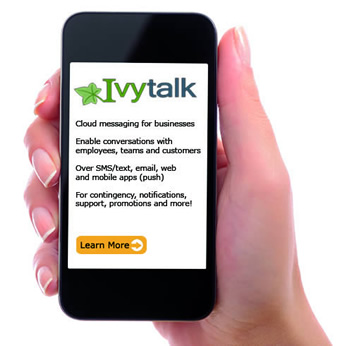
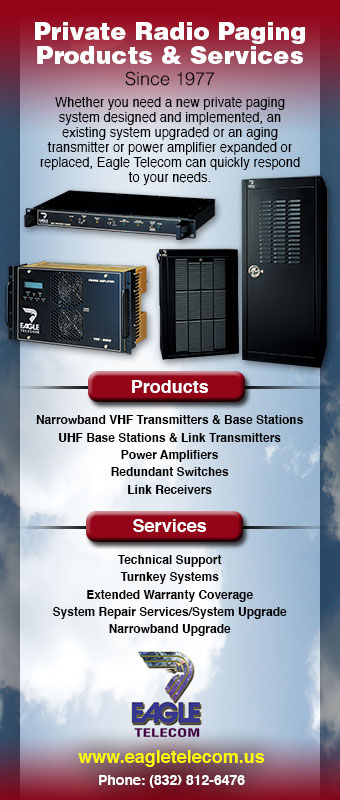
























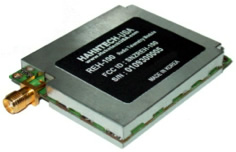






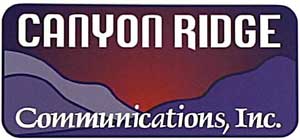






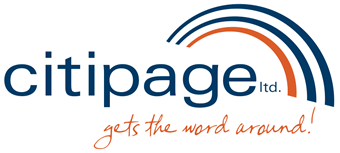













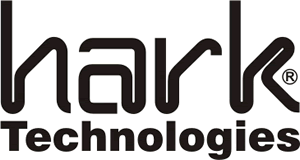
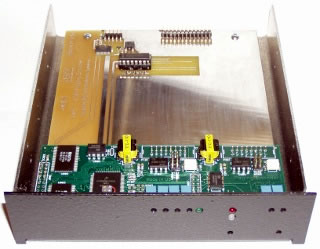

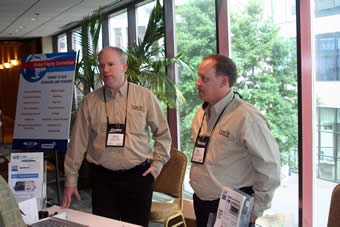 David George and Bill Noyes
David George and Bill Noyes


